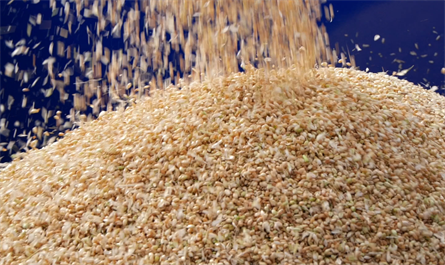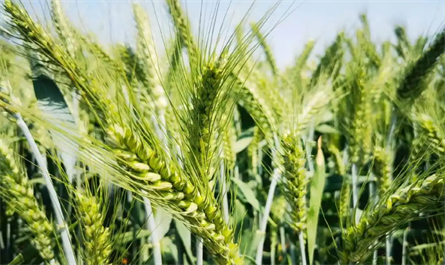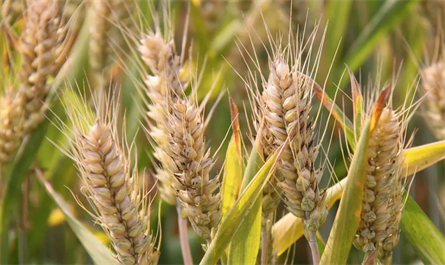Commonly used plant growth regulators and their effects at different growth stages during wheat planting
During wheat planting, the proper use of Plant Growth Regulators (PGRs) can optimize growth, improve stress resistance and increase yield. The following are commonly used regulators and their functions at different growth stages:

I. Sowing to seedling stage
1. Gibberellic acid (GA₃)
- Function: break seed dormancy and promote uniform germination.
- Usage: soak seeds with low concentration (10-20 ppm) before sowing.
2. 1-Naphthyl Acetic Acid (NAA) or Rooting powder (ABT)
- Function: promote root development and enhance seedling stress resistance.
- Usage: mix seeds or spray on leaves during seedling stage.
II. Tillering to jointing stage
1. Paclobutrazol (PP₃₃) or Uniconazole
- Function: inhibit stem elongation and prevent lodging in the later stage; promote tillering into ears.
- Usage: spray before jointing (concentration of about 100-150 ppm).
2. Chlormequat Chloride (CCC)
- Effect: shorten internode length and enhance lodging resistance.
- Usage: spray at the early stage of jointing (0.2%-0.3% solution).
III. Booting to flowering stage
1. Brassinolide (BR)
- Effect: improve photosynthetic efficiency, promote ear differentiation, and reduce sterility caused by high temperature or drought.
- Usage: spray at the booting stage (0.01-0.05 ppm).
2. Sodium nitrophenolate
- Effect: alleviate phytotoxicity or adverse stress and enhance pollen vitality.
- Usage: spray before flowering (1.8% aqueous solution diluted 2000-3000 times).

IV. Grain filling to maturity stage
1. Ethephon
- Effect: promote grain dehydration and accelerate maturity (use with caution to avoid premature aging).
- Usage: spray at low concentration in the late grain filling stage.
2. Potassium dihydrogen phosphate + urea
- Function: Supplement nutrients to the leaves, extend the functional period of leaves, and increase grain weight.
- Usage: Spray during the filling period (0.3% potassium dihydrogen phosphate + 1% urea).
V. Stress management
1. Salicylic acid (SA) or jasmonic acid (JA)
- Function: Induce disease resistance (such as powdery mildew, rust), alleviate drought/salt stress.
2. Abscisic acid (ABA)
- Function: Enhance drought resistance and reduce water evaporation.
VI. Alternatives to organic planting
- Seaweed extract: Contains natural auxin and cytokinin to enhance stress resistance.
- Humic acid: Improve soil environment and promote root development.

Precautions
1. Strict dosage: Excessive dosage may lead to growth inhibition or phytotoxicity.
2. Timing is critical: If chlormequat is used in the early stage of jointing, the effect will be poor if it is used too late.
3. Environmental adaptation: Use inhibitory regulators (such as paclobutrazol) with caution during drought to avoid aggravating stress.
4. Mixing compatibility: Avoid mixing with alkaline pesticides and conduct small-scale tests first.
Summary
Plant growth regulators need to be used flexibly in combination with wheat varieties, soil conditions and climate. The core goal is to coordinate vegetative growth and reproductive growth. In practical applications, it is recommended to use agronomic measures (reasonable dense planting, water and fertilizer management) as the basis, regulators as the supplement, and refer to the guidance of local agricultural technology promotion departments.

I. Sowing to seedling stage
1. Gibberellic acid (GA₃)
- Function: break seed dormancy and promote uniform germination.
- Usage: soak seeds with low concentration (10-20 ppm) before sowing.
2. 1-Naphthyl Acetic Acid (NAA) or Rooting powder (ABT)
- Function: promote root development and enhance seedling stress resistance.
- Usage: mix seeds or spray on leaves during seedling stage.
II. Tillering to jointing stage
1. Paclobutrazol (PP₃₃) or Uniconazole
- Function: inhibit stem elongation and prevent lodging in the later stage; promote tillering into ears.
- Usage: spray before jointing (concentration of about 100-150 ppm).
2. Chlormequat Chloride (CCC)
- Effect: shorten internode length and enhance lodging resistance.
- Usage: spray at the early stage of jointing (0.2%-0.3% solution).
III. Booting to flowering stage
1. Brassinolide (BR)
- Effect: improve photosynthetic efficiency, promote ear differentiation, and reduce sterility caused by high temperature or drought.
- Usage: spray at the booting stage (0.01-0.05 ppm).
2. Sodium nitrophenolate
- Effect: alleviate phytotoxicity or adverse stress and enhance pollen vitality.
- Usage: spray before flowering (1.8% aqueous solution diluted 2000-3000 times).

IV. Grain filling to maturity stage
1. Ethephon
- Effect: promote grain dehydration and accelerate maturity (use with caution to avoid premature aging).
- Usage: spray at low concentration in the late grain filling stage.
2. Potassium dihydrogen phosphate + urea
- Function: Supplement nutrients to the leaves, extend the functional period of leaves, and increase grain weight.
- Usage: Spray during the filling period (0.3% potassium dihydrogen phosphate + 1% urea).
V. Stress management
1. Salicylic acid (SA) or jasmonic acid (JA)
- Function: Induce disease resistance (such as powdery mildew, rust), alleviate drought/salt stress.
2. Abscisic acid (ABA)
- Function: Enhance drought resistance and reduce water evaporation.
VI. Alternatives to organic planting
- Seaweed extract: Contains natural auxin and cytokinin to enhance stress resistance.
- Humic acid: Improve soil environment and promote root development.

Precautions
1. Strict dosage: Excessive dosage may lead to growth inhibition or phytotoxicity.
2. Timing is critical: If chlormequat is used in the early stage of jointing, the effect will be poor if it is used too late.
3. Environmental adaptation: Use inhibitory regulators (such as paclobutrazol) with caution during drought to avoid aggravating stress.
4. Mixing compatibility: Avoid mixing with alkaline pesticides and conduct small-scale tests first.
Summary
Plant growth regulators need to be used flexibly in combination with wheat varieties, soil conditions and climate. The core goal is to coordinate vegetative growth and reproductive growth. In practical applications, it is recommended to use agronomic measures (reasonable dense planting, water and fertilizer management) as the basis, regulators as the supplement, and refer to the guidance of local agricultural technology promotion departments.
RECENT POSTS
Featured News



